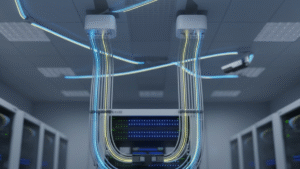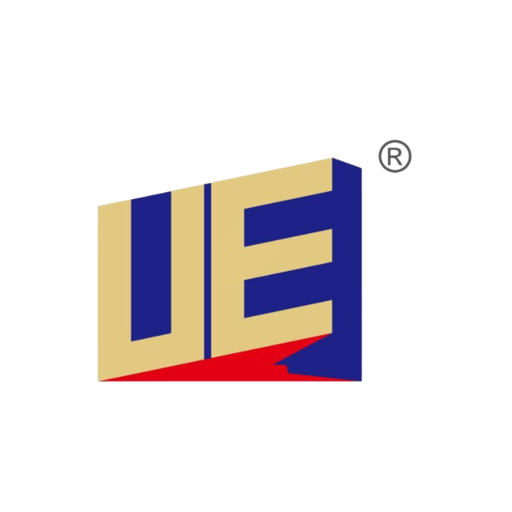As aquariums become smarter, more connected, and increasingly autonomous, one component silently ensures their reliability: the switch-mode power supply (SMPS). Without it, your sensors and controllers would be powerless—literally.
1. The Rise of IoT in Aquatic Environments
Smart aquariums—both for hobbyists and aquaculture professionals—are leveraging IoT technologies to automate and monitor essential parameters. A modern IoT-based aquarium system may include:
- Environmental sensors: temperature, pH, ammonia, salinity, dissolved oxygen
- Actuators and pumps: for feeding, dosing, filtration, or wave simulation
- LED lighting systems: simulating sunrise/sunset and circadian cycles
- Connectivity modules: Wi-Fi, Bluetooth, or Zigbee for cloud syncing and app control
- Edge computing: using microcontrollers to process sensor data locally
All these elements require stable, continuous, and efficient power delivery, and that’s where switch-mode power supplies come into play.
2. What Is a Switch-Mode Power Supply (SMPS)?
An SMPS is a type of power supply that efficiently converts electrical power using high-frequency switching transistors and inductive/capacitive elements. It differs from traditional linear power supplies in several ways:
| Feature | Linear Power Supply | Switch-Mode Power Supply (SMPS) |
|---|---|---|
| Efficiency | 50–60% | 80–95% |
| Size & Weight | Bulky, heavy transformers | Compact, lightweight |
| Heat Generation | High | Low |
| Input Voltage Range | Narrow | Wide (e.g., 90–264VAC) |
| Cost (per watt) | Higher in the long run | Lower TCO due to efficiency |
| Applications | Legacy and audio systems | Modern electronics, IoT, LED, medical |
In essence, SMPS has become the industry standard for compact and energy-efficient devices, including smart aquarium systems.
3. Why Power Quality Matters in Smart Aquariums
Aquarium monitoring and automation devices often operate in harsh or sensitive environments, such as:
- High humidity around tanks or enclosed cabinets
- EMI-prone zones near pumps or LED drivers
- Heat-sensitive ecosystems, especially in coral or shrimp tanks
In these conditions, a substandard power supply can lead to:
- Sensor drift or failure due to electrical noise
- Data transmission errors from microcontroller instability
- Random system reboots or lockups during voltage spikes
- Heat buildup that compromises the enclosure’s lifespan or causes thermal shutdowns
A well-engineered SMPS mitigates these risks by providing clean, noise-free, and regulated DC output, even in fluctuating input conditions.
4. Key Applications of SMPS in Smart Aquariums
Powering Environmental Sensors
Most aquarium sensors (pH, ORP, EC, DO) operate at 5V or 3.3V via internal LDO or DC-DC converters. A 12V or 24V SMPS provides a stable upstream voltage to power all modules reliably.
Controlling Motors and Pumps
Dosing pumps, wave makers, and filtration motors often require a regulated 12V or 24V input. SMPS ensures enough current capacity (1A–5A) without thermal overload.
Lighting and LED Control
Programmable RGB or white LED systems simulate sunlight and moonlight. These systems demand flicker-free, low-ripple power, which only a high-quality SMPS can provide.
Wireless Communication Modules
IoT systems use Wi-Fi or Bluetooth for app integration. Voltage fluctuations can crash ESP32, Raspberry Pi, or similar modules. SMPS with low ripple protects communication uptime.
Backup and Off-Grid Systems
Aquariums with solar or UPS backup benefit from SMPS that support battery charging or operate on DC input, extending system uptime during outages.
5. Technical Considerations When Choosing an SMPS
To ensure optimal performance and safety in aquarium applications, consider the following when selecting an SMPS:
✅ Input Voltage Range
Global compatibility: 90–264VAC is ideal for international use.
✅ Output Stability & Ripple
Low ripple (<50mVp-p) is crucial for sensor accuracy and MCU performance.
✅ Over-Voltage/Current/Short-Circuit Protection
Prevents damage from faulty wiring, lightning strikes, or internal shorts.
✅ Environmental Sealing
IPX4 or higher protection against water spray or condensation in humid conditions.
✅ Electromagnetic Compatibility (EMC)
Conformance to EN55032 Class B or FCC Part 15 ensures no interference with sensitive sensors.
✅ Safety Certifications
Look for CE, UL, RoHS, or even IEC 60601 if the aquarium is part of a therapeutic or public health setup (e.g., hospital aquascapes).
6. Real-World Case: A 24V 2A SMPS in a 75-Gallon IoT Reef Tank
A reef tank with the following setup:
- Wi-Fi enabled controller (5V, 500mA)
- 4 x dosing pumps (12V DC motors)
- ORP, pH, and salinity sensors (3.3V logic)
- LED lighting system (24V, 1.2A peak)
Uses a 24V 2A SMPS, supplying total power via internal step-down converters. With protections and stable current, the system runs 24/7 with minimal maintenance for over 18 months.
7. The Future: Smarter Power Supplies for Smarter Aquariums
Power supplies themselves are evolving. Future SMPS may include:
- Smart energy feedback to optimize energy use
- Temperature monitoring to trigger fan cooling or alerts
- I2C/RS485 interfaces for real-time diagnostics and integration
- PoE (Power over Ethernet) capabilities to simplify wiring
- USB-C PD input/output for modular plug-and-play designs
SMPS is no longer a “passive” component. It’s becoming a smart node in the broader IoT system.
8. Conclusion: Build Smart Systems from the Ground Up
Smart aquariums represent the convergence of environmental science, electronics, and user-centric design. While sensors and software attract attention, a stable power supply is the foundation of it all.
Choosing a reliable, efficient, and application-ready switch-mode power adapter is not just about product longevity—it’s about ensuring fish health, data integrity, and customer satisfaction.
Never overlook the adapter—it’s the power behind your promise of reliability.
👉 Call to Action
If you’re developing or sourcing power solutions for smart aquarium systems, contact us today. Our medical-grade and industrial-grade SMPS solutions are optimized for IoT environments—compact, efficient, and built to last.




